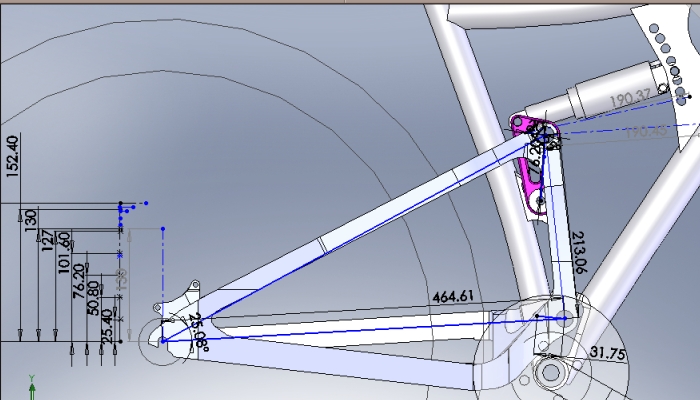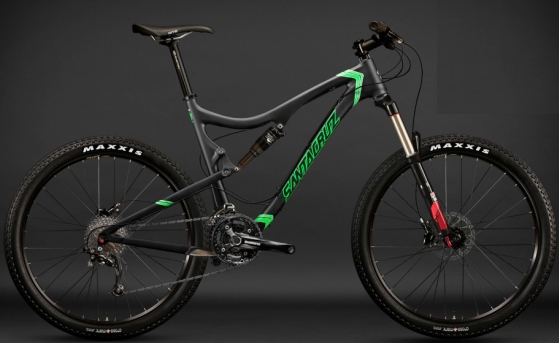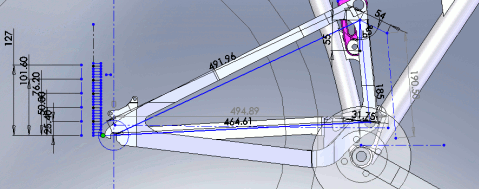Well, those bastards at Kickstarter failed to approve my perfectly reasonable $12,000,000 wedding project, so it’s back to the dozen or so drawing boards for me. Tough to say if I’m still an entrepreneur or just unemployed at this point, but as long as there’re still more ideas than time to put into them, I’m hoping my membership in the corporate DIY club’s still valid. By some standards, I might be a permanent member. I mean, I sold a company to a billionaire. I didn’t make any money, and clusterfuck doesn’t begin to describe what I walked into, but technically, at least, I think I lived the American Dream there for a second. If it ever happens again, I plan on paying very careful attention to the experience, though, because I still don’t think it’s supposed to feel like inserting a disco ball up your ass while putting your hand in a running garbage disposal.
So one wonders if I’m going to try to launch a new company that sells bikes, and by “one,” I mean “me.” One wonders what the hell I’m going to do next. Always so tough to say with me. What I can tell myself is this: making bicycles–I mean really making bicycles–is tough. I wish I was the type of fucker who could just point to a carbon fiber 29er frame in a wholesale catalog from China or Taiwan, spend a few days deciding on decals (I’m sorry, “graphics”), then put that bitch on my crappy, outsourced web site with a picture of me looking sham-wow successful. There are people doing that right now, and they always seem so happy to be living a life devoid of geometry and javascript. One wonders why I tend to do all of this shit myself. Boy, does one wonder.
But if any of you are still playing along at home, I’m eyeball deep in shock rates right now, and the semi-crushing realization that the orientation of my upper link seems to be limiting my shock position options.

Please ignore the actual shock in the photo. I’ve been locating possible areas all over the place, trying to balance shock rate with a position that doesn’t suck. I absolutely, positively hate bikes with shocks that T-bone the downtube at like a 90-degree angle. You can get away with it (particularly if you’re dealing with titanium or steel), but it’s the design compromise equivalent of throwing up in your mouth. Carpet’s still clean, but that doesn’t mean you don’t have a problem.
So that’s where we are–and I have a possible fabrication shop. We’ll have to see how that goes. If I don’t come to my senses or find myself properly employed by the end of November, I may very well be doing something stupid again. And it bears mentioning that, if I end up starting up another company, it won’t be because I’m a wealthy job creator with low taxes, or because of a government subsidy or grant.
I found two interesting pieces on NPR today. Each was fascinating in its own way, but, taken together, they sort of floored me. The first, was a report from Andrea Seabrook regarding the pervasive undercurrent of Ayn Rand’s “Objectivism” in current political rhetoric. In case you’re still not sure who John Galt is, here’s a quick refresher on Rand: she believed man’s “highest moral purpose is the achievement of his own happiness”, and that those who can do were under constant attack from those who can’t. Into the God-shaped hole, Rand’s philosophy inserted Reason, which sounds pretty great to me. But she didn’t stop there. More frequently on display these days is Rand’s assertion that the ideal world consisted of a tax-free, purely capitalistic economy (as icons go, she specifically replaced the crucifix with a dollar sign), and it’s that part of Objectivism that’s current wailing and knashing its teeth at the injustice of making the wealthy “job creators” pay more taxes or stop buying politicians or stop dumping toxic shit into the environment.
Rand grew up in Russia, and I don’t doubt she believed passionately in her clunky characters and teared up over her own ice cold prose, but in the end, the two-packs a day girl who thought critics of nicotine were perpetrating a hoax found herself taking her government social security payments. The idea of Ayn Rand, though, is something guys like no-tax pledge architect Grover Norquist enjoy dressing up in when all alone and clopping around in front of the mirror to see. Government is bad, and it’s killing the real prime movers of our economy–the Randian heroes, the Roarks, Galts, Taggarts and Reardens–men (generally–gender’s another story entirely in Rand) who use their sweat, their minds, and their hands–modern day embodiments of Atlas, whose inventions and brilliance are doing more than just creating jobs; they’re supporting the world.
You know, guys like Grover Norquist, who, as near as I can tell, have never had an actual job. These are salt of the earth hard workers, born into adversity, like being the son of a Vice President of a large corporation, or having to attend Harvard (on what we can all assume was an academic scholarship, destitute and disenfranchised as the sons of corporate VPs tend to be). Like Galt, Norquist came from “out of nowhere, penniless, parentless, tie-less,” except that he was the opposite of each of those things. Yes, John Galt, humble genius inventor, certainly is eerily visible in today’s Washington hanger-on or billionaire hedge fund manager, or any of the 1%, persecuted by the ignorant masses out of jealousy of their clearly superior intellect and work ethic. Food for thought. Food that’d give you cancer if the Food and Drug Administration weren’t around to stop it, but food nonetheless.
Rand’s resurgent popularity fit nicely with the other interesting thing I overhead today on that liberal hippie-fest, NPR, because who in our modern society compares to a guy able to invent an engine that runs on static electricity? No, not Steve Jobs. Too artsy-fartsy for Rand, to be frank. How about a guy whose invention can turn any water pure?
Dean Kamen, that inventor and entrepreneur who created stuff as diverse as the Segway (not sure we can score that one a win, but bear with me), to high-tech prosthetic arms was being interviewed by John Donvan. Kamen’s theme was America’s current state, and how government emphasis on jobs is missing the point. We’ve lost our drive to innovate, was his point, and we urgently need to address that loss. The interview included this exchange:
DONVAN: The big question in all of this: If you’re correct and we let this happen, why would we let this happen?
KAMEN: I don’t think it was intentional. I think, you know, a rich environment leaves you – you know, people get a little lazy. When you’re a rich country – I think we’ve enjoyed, you know, generation after generation, always doing a little better than their parents. And I think people started to think it’s simply our birthright to have high quality health care and high quality education and…
DONVAN: So – but what did we stop doing? What did – and I’m not sure which we I’m asking about, but let me put it this way: What did we – we just did a show with people about losing work and they want to work. What did we, the workforce, do wrong to contribute to this?
KAMEN: I’m not sure it’s the workforce. I think we as a culture, we as a country lost our edge. We stopped investing in all the leading-edge stuff. The work ethic of your great grandparents and your grandparents – as I said, when you become a culture that seems to be born and you know the water is drinkable and the – you flip the switch and the lights go on and life is good and you have security, maybe you don’t work as hard as they work around the world to pick themselves up out of poverty. But we pick the worst possible time, the worst possible generation to sit back on our laurels because the rest of the world has figured out that the model that worked so well for a few hundred years in the United States, namely highly motivated, highly educated, incentivized innovation – let the government do everything it can to create an atmosphere where entrepreneurs and innovators will risk their life and their resources and their money to create great, new things.
You know, that makes it sound like we have a complicated problem on our hands. Not one that government alone can solve, and–most importantly–not one that our current wealthy seem able to, or interested in, fixing with their god-given superior intellect and work ethic. The “inventions” of our modern American billionaire heroes are credit default swaps not airplanes, housing market bubbles not telephones. “Who is John Galt?” I don’t know, but I’m pretty sure he lives in China now. Grover Norquist picked up his old house in a short sale.














